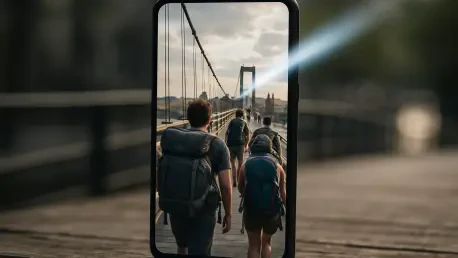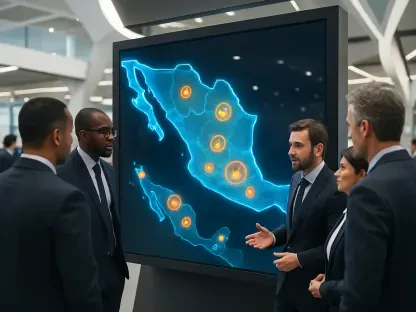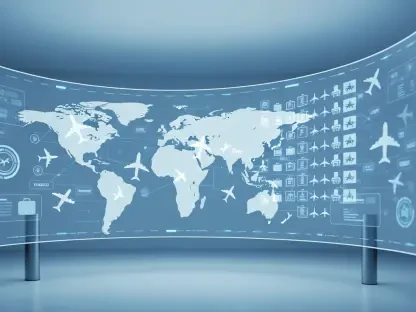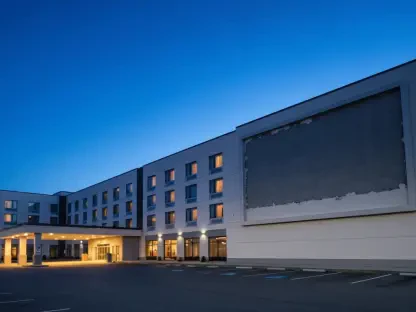Listen to the Article
Augmented reality (AR) is transforming destination marketing by offering immersive and interactive travel experiences. AR in tourism involves reshaping the industry through digital avenues that promote trips in an exciting way. Marketers use it to provide potential tourists with engaging and unique options to virtually experience locations before visiting them.
Virtual exploration in travel and tourism is set to grow between 2023 and 2028 at a 30.2% compound annual growth rate. This growth projection is based on the increasing adoption of interactive experiences in travel advertising. Continue reading to learn more about why AR is effective in the tourism industry, how it is integrated to enhance experiences, and its efficiency in revenue generation.
Why Marketers Introduce Augmented Reality in Tourism
AR is revolutionizing traveling by allowing clients to discover and engage with destinations through virtual channels. Augmentation takes physical experiences and turns them into beautiful digital realities that potential travelers can enjoy before committing to the experience. AR tools enable tourists to explore famous landmarks, interact with natural wonders, and see artifacts from the comfort of their homes. They can use 3D models to view iconic infrastructure and take virtual tours of areas that may be far away, such as the Eiffel Tower or the Taj Mahal.
Introducing AR in tourism also allows ideal customers to browse cities, streets, or safaris while using travel apps. The benefits of immersive technology include:
Better accessibility for clients: Immersive technology is all-inclusive, so potential buyers who have limited mobility or disabilities can explore destinations digitally that are difficult to access physically. This level of accessibility builds travel brand awareness and respect, making people want to support the agency’s tourist initiatives.
Stronger buyer confidence: By presenting an opportunity to experience locations virtually, travelers learn more about the experience they are about to pay for, which increases the likelihood of making the purchase. When browsing activities, clients will be confident in choosing the ones they encounter online, minimizing the risk of refunds and complaints for the company.
More informative experiences: AR offers an educational approach to traveling that adds value to customer experiences. When it is used efficiently, immersive technology informs buyers about the culture and natural wonders of the location, allowing them to receive knowledge related to the different places they travel.
Increased revenue opportunities: Travelers gain confidence to make informed decisions and plan distinct trips, including customizing their itinerary with add-ons and leisure activities. AR tourism makes the travel planning journey a unique experience for clients, which motivates them to make a booking and purchase more options.
How Virtual Destinations Enhance Travel Experiences
Travel and tourist companies can integrate immersive experiences to remain competitive, increase customer satisfaction, and build revenue. The immersive technology market is anticipated to expand at a compounded annual rate of 38% by 2030. This growth shows how powerful AR is and can be in helping company expansion.
Personalized Travel Packages
With increasing competition within the travel space, offering unique experiences allows companies to thrive and provide high-quality encounters using AR. Travelers are more likely to buy experiences when they are personalized with all-inclusive offers. If anything, 63% of tourists turn away from travel offers that do not have their personal needs at the center of their marketing strategy.
Marketers can expand products in a way that differentiates them from competitors using AR. Integrating these features provides tourists with personalized experiences that focus on what they enjoy, allowing them to choose from multiple options and effortlessly navigate their interests on a digital application, which helps customers browse and book using online avatars, support, and suggestions.
With personalized packages, clients can access support and communication about travel experiences using digital tools. By virtually exploring locations, navigating attractions, and interacting with augmented reality in real time, potential buyers get to use smart technology to generate revenue through augmented ticket sales, tours, and partnerships with local tourist agencies.
Customer Collaboration
Using AR in traveling enhances customer satisfaction by enabling apps that allow users to preview sites that interest them. Travelers can review and rate destinations according to their preferences, enabling them to review and provide feedback on places as they visit. It is important for hospitality businesses to enhance collaboration and communication with target audiences, so marketers can use AR to initiate this connection.
Travel agencies can also consider implementing useful features such as virtual avatars and AR representatives to support customers through tourist experiences. These digital personas provide value, suggestions, and answers to common queries, improving customer experiences, support, and collaboration.
Virtually Explore Areas
With AR available, marketers can blend physical and digital elements into an app to allow potential customers to easily navigate destinations. Virtual exploration enables travelers to pinpoint multiple areas with their phones and relax while receiving digital guidance on directions.
Real-time visuals make it possible for customers to familiarize themselves with their surroundings and explore new places more easily. For example, the travel app, World AroundMe, informs travelers about locations near their visiting site, including popular restaurants, attractions, hospitals, ATMs, and hotels.
Guest Entertainment
Besides potential tourists getting self-tour guides, maps, and information about popular destinations, AR offers real-time data about traveling experiences. Travelers can use digital tools to retrieve information about artifacts, animals, and paintings within the areas they visit. This can make the travel experience more engaging and fascinating as travelers get to learn more about different travel destinations.
What was traditionally a one-way viewing experience turns into an immersive encounter that enables visitors to submerge themselves in the culture and environment they visit. For example, using the Louvre Museum App, which is accessible on Apple, Google, and Amazon stores, offers information to make a traveler’s experience enjoyable. Customers receive information about the best time to visit, transportation options, and interesting facts about some of the most well-known artworks in Paris.
AR: An Opportunity to Generate Revenue in Travel and Tourism
Boost Sales With Virtual Tours
By introducing virtual tours and showcasing leisure facilities, customers gain an understanding of the fun experiences available to them, which allows travel agents to increase interest and the likelihood of purchases. AR also allows potential customers to book tickets on demand as they browse and discover suitable experiences. With apps, customers have options for instant booking, avoiding long queues, and arranging travel activities according to the weather, promoting convenience and higher sales patterns.
Impactful Marketing
AR increases customer engagement with travel packages by double compared to non-AR counterparts. Digital destination marketing enables companies to create interactive and engaging material that combines real-world environments with digital options, which inspires travelers to be proactive. Marketers can feature creative designs and animations to share impactful campaigns that cement the value of travel brands within the virtual environment, making sales and demand generation more probable.
Gamification and In-App Purchases
Immersive experiences can also be available as game-like features that customers can use to participate in challenges, earn rewards, and complete fun quests. Gamification presents a fun way for travelers to engage and learn more about their destinations. It also provides travel agencies with opportunities to generate revenue and offer in-app purchases and upgrades that keep travelers interested.
Conclusion
Augmented reality is transforming how agents interact with customers and reshaping travel experiences in the tourism industry. Digital tools have the potential to provide a new way for tourists to engage with multiple destinations and make their visits more memorable. Taking advantage of the opportunities that this innovation brings allows travel agencies to optimize experiences and leverage technology to generate demand, drive conversions, and boost sales.









